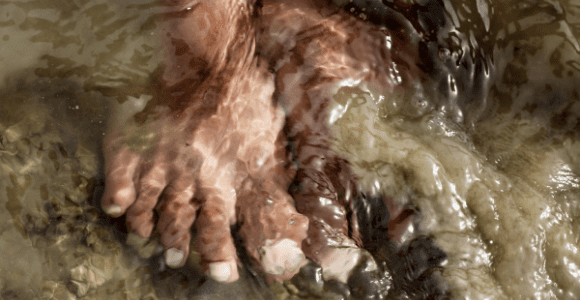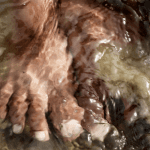Welcome readers! Please subscribe through the button on the right.

Our reading this week is from the gospel of John:
“Six days before the Passover, Jesus came to Bethany, where Lazarus lived, whom Jesus had raised from the dead. Here a dinner was given in Jesus’ honor. Martha served, while Lazarus was among those reclining at the table with him. Then Mary took about a pint of pure nard, an expensive perfume; she poured it on Jesus’ feet and wiped his feet with her hair. And the house was filled with the fragrance of the perfume. But one of his disciples, Judas Iscariot, who was later to betray him, objected, “Why wasn’t this perfume sold and the money given to the poor? It was worth a year’s wages.” He did not say this because he cared about the poor but because he was a thief; as keeper of the money bag, he used to help himself to what was put into it. “Leave her alone,” Jesus replied. “It was intended that she should save this perfume for the day of my burial. You will always have the poor among you, but you will not always have me.” (John 12:1-8)
John creatively resets this story from previous versions of the Jesus story by including the characters Mary, Martha, and Lazarus. There are both significant differences and consistent story elements. What is common in each version is a meal, a woman interrupting the meal, a container of perfume, objections from some of those present at the meal, and Jesus’ defense of the woman’s actions. Oral storytelling traditions commonly alter story details for the storyteller’s purposes or the needs of their audience. John’s storytelling does that too.
In John’s version of this story, we are in Mary, Martha, and Lazarus’ home, not the home of Simon the Pharisee (Luke) or Simon the Leper (Mark and Matthew). The woman who interacts with Jesus is Mary of Bethany (Martha and Lazarus’ sister), not the woman of ill repute as in Luke, nor an unnamed woman as in Mark and Matthew, and most definitely not Mary Magdalene (contrary to the 6th Century Pope Gregory, Mary of Magdalene is a completely different character in John’s gospel). Mary also anoints Jesus’ feet (not his head as in Mark and Matthew). Foot-washing was a customary hospitality practiced at dinners in a culture where people ate together seated in a reclining position on the floor, not at a table that hid guests’ feet.
In this story, Mary’s act is one of gratitude, specifically for the events of the previous chapter. In that chapter, Lazarus, Mary’s brother, had gotten sick and died, and Jesus brought him back from the dead to live again. This is a repeated theme in the gospels: life and life-giving overturning, undoing, and reversing death and death-dealing. It is one of the strongest, most life-giving interpretations of the Jesus story. The story is not primarily that someone died, but that that the state’s murder of someone who was calling for social change was overturned, undone, and reversed. The life-giving teachings of this Jewish prophet of the poor from Galilee lived on in the life of his followers. In Acts 13:32-33, the early believers say: “We tell you the good news: What God promised our ancestors he has fulfilled for us, their children, by raising up Jesus” (italics added).
The good news in this interpretive paradigm is not that Jesus died, but that Jesus overcame death, death-dealing and the state. His story is a story of life overcoming death, or love overcoming in the end—love that overcomes hate, fear, injustice, and bigotry.
We’ll unpack how this relates to Mary’s gift of gratitude, next.
(Read Part 2)














